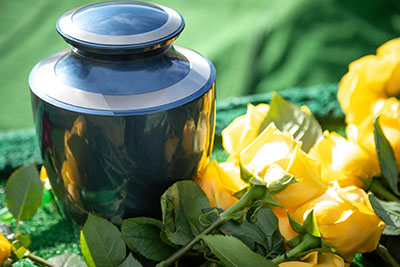Planning the Ceremony and Choosing Funeral Home Services
Last updated December 2021
Ceremonies range from simple direct dispositions to lavish funerals. Consider whether you want a traditional funeral, with the casket open or closed, or would prefer a memorial service with no body present. Memorial services, church services, and graveside services usually cost less than conventional funerals.
You also need to choose between a religious and secular service, either of which can be held at a funeral home, religious establishment, residence, or elsewhere.
Finally, decide whom to invite. Do you want the ceremony open to all relatives and friends, or to only immediate family?
 Determine what would be a meaningful commemoration of the deceased. Something simple can often be quite profound. You don’t need an expensive funeral to express love and respect.
Determine what would be a meaningful commemoration of the deceased. Something simple can often be quite profound. You don’t need an expensive funeral to express love and respect.
When discussing options with a funeral home, start by asking for its General Price List (GPL). The Federal Trade Commission (FTC) requires funeral homes to provide a copy of their prices if you visit their facilities and ask about costs. Some funeral homes—only about one-fourth of those we shopped—post their GPLs on their websites; Checkbook and other consumer groups think all should do so.
Although they are not required to send you the entire price list if you call or email to request it, many will. (If you have chosen a specific type of service, such as a simple cremation, they are required to quote a price over the phone, upon request.)
Many consumers find deciphering GPLs confusing and overwhelming. Because some are long and include unfamiliar jargon and bewildering package options, request a written itemized price quote for any services you’re considering.
When you request prices or price lists, some funeral directors may encourage you to come in because “These matters are too complicated to discuss over the phone,” or “We will surely be able to work something out between us.” Our advice: Deal only with funeral homes that readily supply detailed pricing info to potential clients without requiring an appointment.
Since each option offered by funeral homes costs money and affects the atmosphere of a funeral service, you need to choose carefully what you want and don’t want. These decisions are personal matters and should not be dictated by a funeral director.
Preparation of the Body
Although it is not required by law, most funeral homes require embalming if an open casket will be available for public viewing. Exceptions are usually made if religion forbids embalming. If you do not want embalming, you usually can choose an arrangement that does not require you to pay for it, such as a closed-casket funeral, direct cremation, or immediate burial.
Embalming and an open casket open the door to all sorts of additional funeral expenses. In our survey of funeral homes, the average cost for preparing the body—including embalming, cosmetology, and dressing—was about $1,200.
Casket
The casket is usually the single most expensive item in funerals. Casket prices range from less than $1,000 for a wood box to $25,000 or more for elaborate models. Since the markup on a casket is often three to five times wholesale, a funeral director’s advice—and even the design of the selection room—may lure you to pay too much. Most people choose midrange steel or hardwood models for $3,000 to $6,000. If a closed casket is draped with a flag, funeral pall, or flowers, a less expensive casket can be used.
The least expensive containers—cardboard containers or pouches—are adequate for cremation or direct disposition. Some homes may have rental caskets that can be used for viewing, which allows you to buy a less expensive one for disposition.
Our undercover shoppers found the least expensive way to buy caskets is to shop online.
 Urns
Urns
With cremation, urns have replaced caskets as major profit centers for funeral homes. You can buy one from the funeral home or provide one yourself. Prices range widely, from less than $50 to thousands of dollars for artist-made urns. Most funeral homes provide a simple plastic or cardboard box as a basic urn. What you use doesn’t have to be an “official” urn at all; it can be a ceramic pot with a lid, for example. But if you plan to place an urn in a columbarium or cemetery, check on maximum dimensions or restrictions on types and colors.
Vault or Grave Liner
To prevent the ground from collapsing or caving in, many cemeteries require a vault or grave liner to hold a casket. Unlike caskets, this item is rarely included in the package price of a “complete” funeral. Prices of outer burial containers typically range from about $500 for the least expensive concrete grave liner to $8,000 or more for a “triple-reinforced” bronze vault. Because neither vaults nor liners preserve remains, a cement liner serves the same purpose as an elaborate vault at a considerably lower cost. Because a vault or grave liner might cost less from a cemetery than from a funeral home, check this out before buying.


